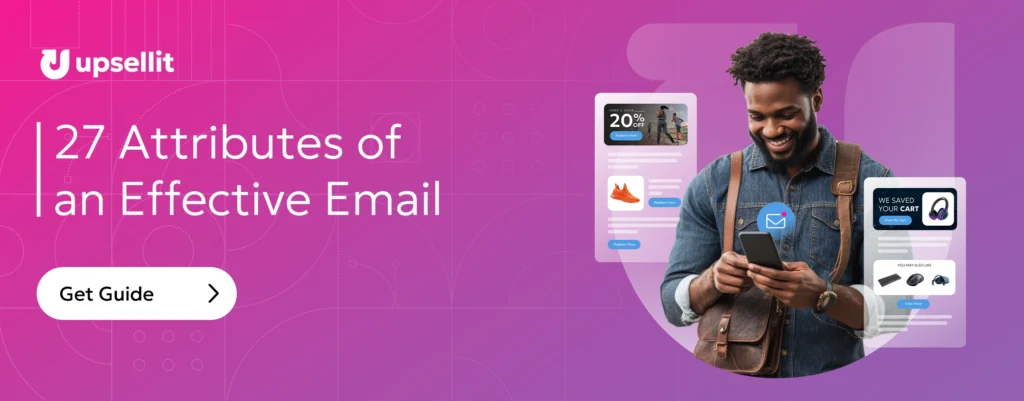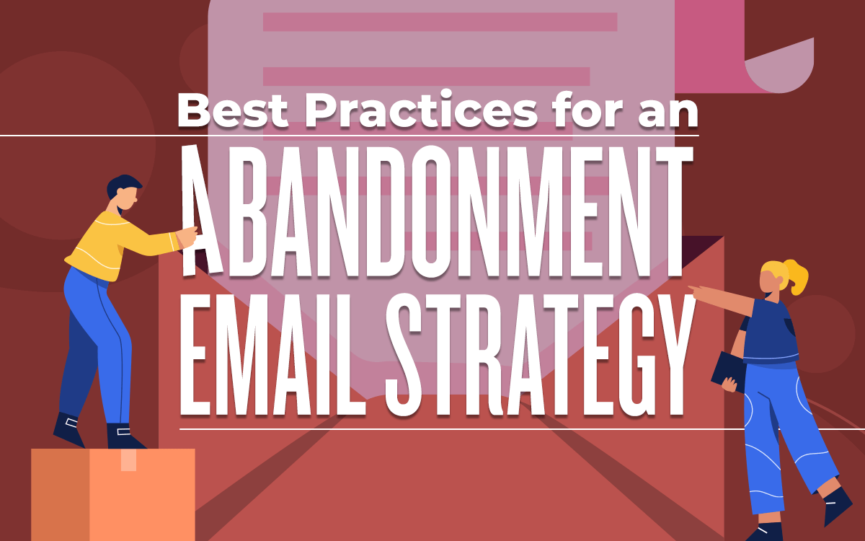It can be frustrating when a customer makes it all the way to the final stages of the shopper journey, only to abandon their cart. Luckily, with the right abandonment email strategy, you can win shoppers back and recover those otherwise lost sales.
What is an Abandoned Cart Email?
Let’s start with the basics. An abandoned cart email is exactly what it sounds like: a follow-up email sent to a shopper who adds items to their online shopping cart, (often) starts the checkout process, and then leaves the site without completing the purchase.
The Importance of an Email Strategy
While a variety of cart abandonment rates have been reported, the average is around 70%. At that rate, only about 30% of shoppers are not abandoning their carts – and when you put it that way, online stores simply can’t afford not to have a cart recovery email strategy.
But how exactly should an abandonment email strategy be organized? In this article we’ll examine best practices for cart abandonment emails, and the ways they can drastically improve your conversion rates.
Download Now: 27 Attributes of an Effective Email
7 Best Practices for an Abandonment Email Strategy
1. Start With the Subject Line
If you’re wondering whether a subject line is really all that important to email marketing, here are a few email statistics worth paying attention to: 47% of email recipients open an email based on the subject line alone. 69% of email recipients report an email as spam based solely on the subject line. So, if you’re looking to increase your abandonment email open rates, the subject line is the right place to start.
Because this one line holds so much weight, ecommerce businesses are always trying to nail down exactly what makes a great email subject line. Research shows that consumers seem to have heart eyes for emojis in email lines. In fact, 56% of brands using emojis in their email lines had a higher open rate.
2. Find the Right Frequency
Many shoppers may see an abandonment email, then become sidetracked. Sending multiple emails serves as a reminder to those shoppers and keeps your brand top of mind. Additionally, people often need to consider a purchase several times before acting. By sending multiple emails, you prompt repeated consideration and drive browsers to become loyal customers.
3. Utilize the Three Email Drip
Persistence is vital in a successful abandonment email strategy. While some users may convert after the first email, a series of three personalized emails tends to have the highest success rate. By sending three messages, you maintain consistent contact that keeps you top of mind without driving unsubscription rates.
Let’s take a look at all three emails in a standard abandonment email strategy and the importance of each.
Continue the Conversation
Your first abandonment email should be positioned to continue the conversation by gently reminding the shopper to complete their purchase. It should go out about an hour after a shopper leaves your site. While you may be tempted to send the first email within seconds, this can actually become counterproductive. If a potential customer simply navigates away for a moment with plans to return, the immediate contact may register as spam in the shopper’s mind.
Send a Reminder
In general, it’s best to wait at least 24 hours before sending a second abandonment email. The second email should serve as a reiteration of the original message. Since it’s entirely possible that the shopper missed your first message, it’s ok to assume they’re receiving information they haven’t already seen. That being said, you don’t want the email to be a carbon copy of the original.
Incite Urgency
If possible, send the third and final email in the series 72 hours after abandonment. Waiting for this length of time makes it likely that the recipient has seen your prior emails and is familiar with the offer.
For a subject line, try to use the word “expire” to get the email opened. If you’re using an incentive, tell the visitor their “offer is about to expire.” This can get last minute shoppers to purchase with a discount while they still can.
While evoking a sense of urgency can unquestionably work, avoid overplaying your hand. Unless your offer will truly never meet their inbox again, don’t exaggerate the importance of the offer. This not only makes a brand seem desperate, but it also makes the user more likely to unsubscribe from future emails. Furthermore, remember not to antagonize the customer for not acting. While a non-converting shopper is frustrating, remember to keep a pleasant tone even as you invoke urgency. This is supposed to be a friendly reminder after all.
4. Rebuild Shoppers’ Carts
Sending messages containing the cart contents left behind by a shopper is a great way to nudge customers back to your site. Since your call to action is for the customer to return to their cart and check out, you should also make sure that clicking the CTA button brings shoppers back to where they left off. This creates a seamless user experience and clears the path to conversion.
5. Include Product Recommendations
Cart abandonment emails are an opportunity to cross-sell and upsell. Based on the items in the user’s cart, you can recommend complementary products such as add-ons or accessories. For products that have higher or newer models available, you can position the email copy to inspire shoppers to upgrade. Whether you’re going for a cross-sell or an upsell, it’s best to include images of the recommended items and social proof to emphasize their popularity.
6. Leverage Offers and Incentives
A great strategy to convince shoppers to complete their purchase is to reiterate on-site offers or offer new incentives. For abandoned cart shoppers, even an offer such as free shipping or free returns may be the small push towards conversion that they need.
If you’re offering shoppers an incentive to return, make it clear in the subject line. This can boost open rates, recovery rates, and overall campaign performance.
7. Optimize for Mobile
When it comes to which device people use to open emails the most, mobile wins by a landslide. That’s why it’s crucial to optimize your emails for mobile devices. This optimization includes both compelling copy that gets right to the point and mobile design best practices.
Inspiring Shoppers to “Return to Cart”
A well-executed abandonment email strategy is essential for any ecommerce business. While shoppers may have abandoned their carts for a number of reasons, you only have to give them one good reason to return. By sending a series of strategically planned emails, you empower your business to continue the conversation and recover conversions.
Looking for More Ways to Increase Your Conversions?
Check out Upsellit’s 27 Attributes of an Effective Email. This in-depth guide covers the ins-and-outs of crafting the perfect remarketing email. It’s a great resource and it’s totally free! Download it today and start writing awesome emails that convert.

